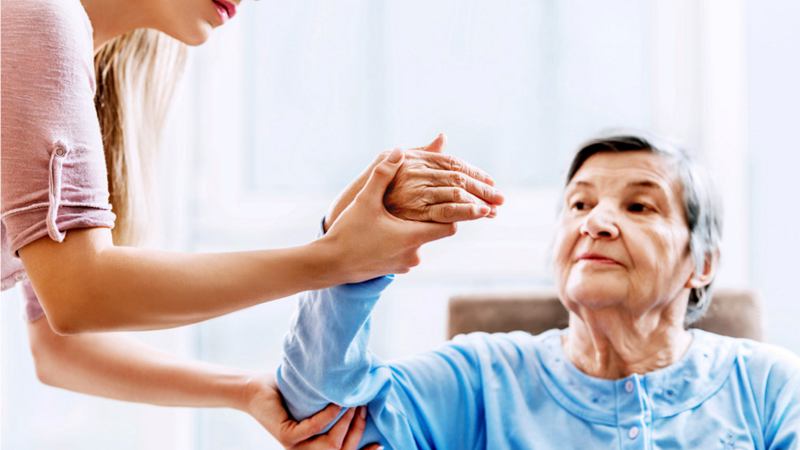 11th May 2018
11th May 2018
The Importance of Testing after a Stroke
A recent medical study suggests the traditional way of testing a stroke victim’s ability to complete daily life tasks may not be completely inaccurate. Traditionally, when a stroke victim is tested for his or her capacity to complete a daily task, the testing takes place in a hospital or rehabilitation clinic. The patient enters the clinic, gets hooked up to a number of movement sensors and is asked to perform certain tasks by the doctor. The sensors then report on the functionality of the patient’s extremities (i.e. how much force the patient uses to push or pull, stand, sit, etc.). The report is then used to determine how much help may be needed for the patient when he or she returns home and has to deal with everyday tasks. The report can also be helpful in determining which muscle strength testing device might best help a patient.
Motor Assessment Tools to Test Impact of Stroke
Motor function, the ability to use and control muscles and movements, is essential to completing daily tasks successfully and having quality of life. Motor function is a complex process and requires the integration of multiple systems. Measuring motor function adequately requires several different testing tools in order to analyze diverse movement functions.
Dexterity: A stroke may inhibit a patient’s ability to use their fingers and manipulate objects. A pegboard test, like the Lafayette 25-hole pegboard, would be utilized to analyze manual dexterity and coordination.
Strength: Strength refers to the capacity of a muscle to produce the force and necessary for maintaining posture and facilitating movement. A dynamometer like the Jamar Hydraulic Hand Dynamometer would be able to provide measures of strength for the extremities.
Locomotion & Endurance: After a stroke, it’s important to measure the ability to move the bod from one place to another, along with the velocity and quality of the gait. Ideally, clinics would have a course to use for these tests, but if unavailable, a 3-minute step test can be used to establish a patient’s ability in these areas.
The problem with these types of motor function testing is it does not take into account that the amount of functional force a patient might exhibit in a clinic under controlled testing might not translate into performing actual daily activities. Taking out the trash, pulling the lever on a recliner, stepping into a bathtub, opening a door, etc. are very different from pushing against a doctor’s hand or picking up a weight in a clinic.
According to the study, the most accurate way of testing a stroke patient’s capacity to complete tasks is to put sensors on both patients and household objects. The study used radio frequency devices attached to both the patient and his or her household objects. When a patient came within 23 centimeters of a monitored object the sensor on both the patient and the object were triggered. For example, the test sought to determine the extent to which a stroke victim was actually using her right arm to perform daily household tasks. When the patient walked into the kitchen to get a cup of coffee off the counter the sensor was triggered. The radio frequency was able to determine which arm the patient used to pick up the cup of coffee. Under this form of testing, it can be determined what tasks the patient feels he or she is able to accomplish when alone in the home.
However, the rehabilitation process for people affected by strokes by involves more than running simple tests.
Stroke is the leading cause of long-term disability in the United States. There are nearly 800,000 strokes annually, with women at a higher lifetime risk of incidence. When a person survives a stroke, the may experience several problems and issues.
Effect & Impact of Stroke on Patients
- Paralysis on either side of the body
- Speech/language problems
- Slow, cautious behavioral style
- Memory loss
Every stroke effects each patient differently, however the effects listed above are the most common and can greatly impact a patient’s quality of life and ability to live independently. Understanding a person’s risk for stroke and taking preventative measures, such as lifestyle changes, are the best way to avoid a stroke. However, when a patient has suffered a stroke and experienced physical deficits, physical therapy can help them regain some of their independence and improve their quality of life.
Physical Therapy Modalities that Address Negative Impacts Experienced After Stroke
Using different modalities to address the physical impairments caused by stroke helping patients to regain function.
Improve Movement & Dexterity: Utilizing therapeutic exercise and equipment like continuous passive motion machines or foam hand ball exercisers, practitioners can address paralysis and limb impairment experienced by stroke patients.
Increase Strength & Endurance: Using equipment like underwater treadmills, traditional treadmills, upper body exercisers, stroke patients can work towards building their strength and endurance.
Improve Locomotion & Balance: Balance balls, balance pads and training stairs are all useful tools in addressing balance issues and improving gait for stroke patients that experience deficits in their coordinated movements, like walking or climbing stairs.
Addressing the negative effects of strokes for patients requires adequate tools to measure any deficits and modalities that can help those patients regain lost function and improve their ability to participate in daily tasks. As we’ve seen, clinical tests aren’t perfect in their ability to address day-to-day issues, but they give an important measurement to work with and plan a rehabilitative regimen that looks to help stroke patients thrive.






